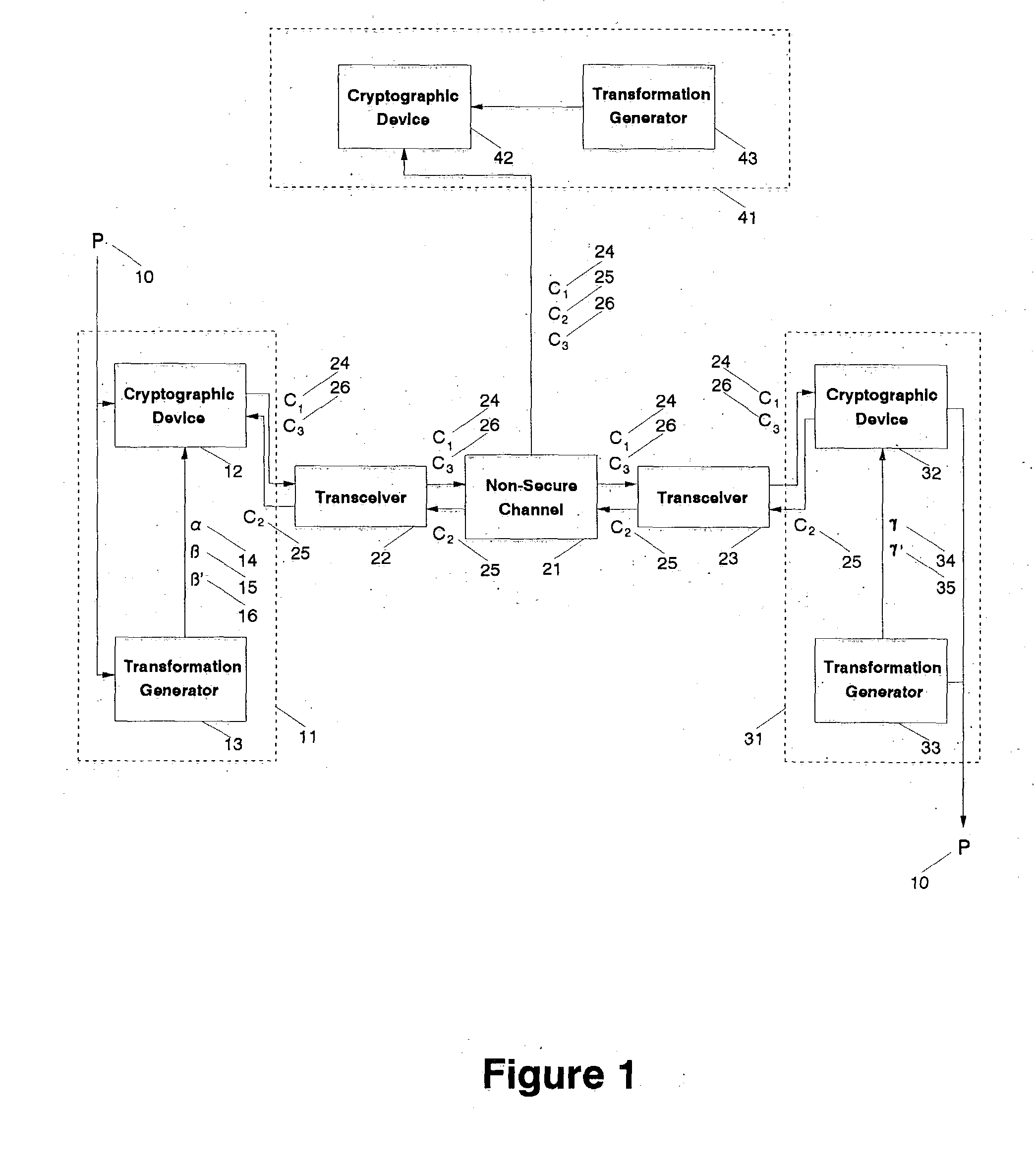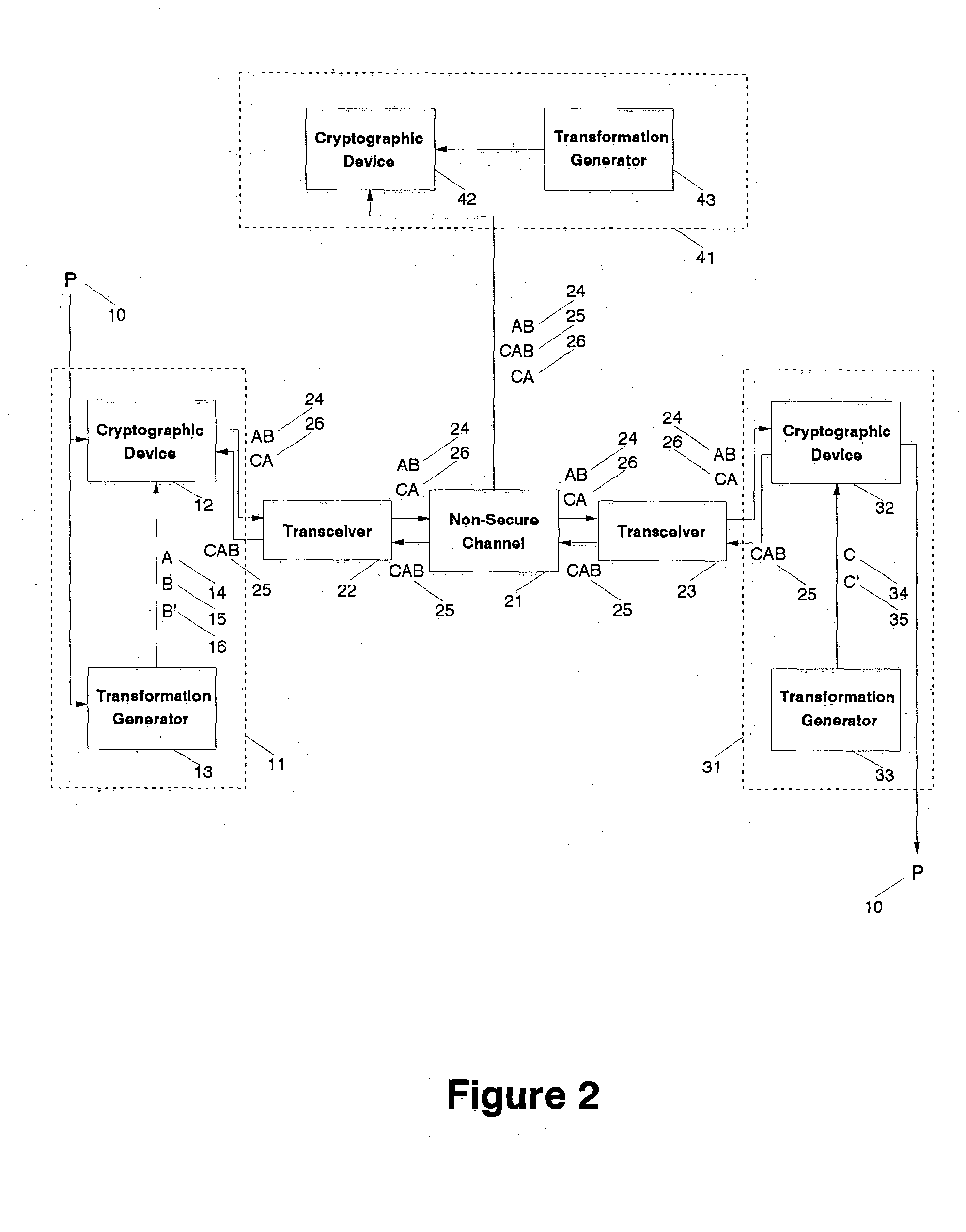Fully secure message transmission over non-secure channels without cryptographic key exchange
a cryptographic key exchange and fully secure technology, applied in the field of cryptography, can solve the problems of considerable difficulty in determining the security of public key protocols, essentially inherent computational difficulty, and considerably slower than
- Summary
- Abstract
- Description
- Claims
- Application Information
AI Technical Summary
Benefits of technology
Problems solved by technology
Method used
Image
Examples
Embodiment Construction
[0032] Referring to FIG. 1, a cryptographic system is shown in which all communication takes place over a non-secure channel 21. The non-secure channel 21 may include a telephone line, a radio connection, a cellular telephone connection, a fiber optic line, a microwave connection, a coaxial line, an infrared optical link, or any other communication technology that permits the transmission of information from a first location to a second location. Two-way communication is exchanged on the non-secure channel 21 between the initial converser 11 referred to as the transmitting party T and the second converser 31 referred to as the receiving party R using transceivers 22 and 23, for example digital cellular telephones, modems, or any other mechanism for converting information into the structure necessary for transmission by the non-secure channel 21. The transmitting party 11 possesses a plaintext message P 10 to be communicated to the receiving party 31.
[0033] Both the transmitting par...
PUM
 Login to View More
Login to View More Abstract
Description
Claims
Application Information
 Login to View More
Login to View More - R&D
- Intellectual Property
- Life Sciences
- Materials
- Tech Scout
- Unparalleled Data Quality
- Higher Quality Content
- 60% Fewer Hallucinations
Browse by: Latest US Patents, China's latest patents, Technical Efficacy Thesaurus, Application Domain, Technology Topic, Popular Technical Reports.
© 2025 PatSnap. All rights reserved.Legal|Privacy policy|Modern Slavery Act Transparency Statement|Sitemap|About US| Contact US: help@patsnap.com



